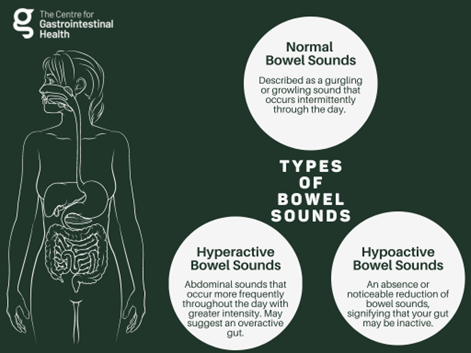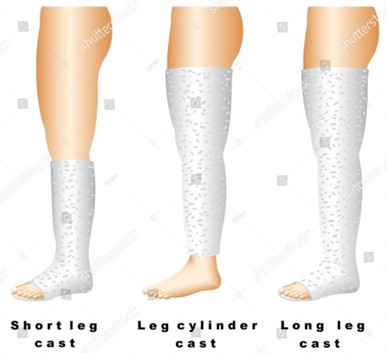A nurse is reinforcing teaching to a newly licensed nurse about bowel sounds. Which of the following characteristics should the nurse use to describe hyperactive bowel sounds?
Sounds are high-pitched
Can be a result of a paralytic ileus
Indicates decreased motility
Sounds are soft and at a rate of 1/min
The Correct Answer is A
Hyperactive bowel sounds are bowel sounds that are louder and more frequent than normal. They may be heard as high-pitched rushing or tinkling sounds that occur irregularly at a rate greater than 5-6 sounds per minute. They are often associated with increased intestinal motility, such as diarrhea, gastroenteritis, or early bowel obstruction.
Option b is incorrect because hyperactive bowel sounds are not typically associated with a paralytic ileus, which is a condition where the bowel stops working and there is a lack of bowel sounds.
Option c is incorrect because hyperactive bowel sounds indicate increased motility, not decreased motility.
Option d is incorrect because soft bowel sounds at a rate of 1/min are considered hypoactive bowel sounds, which can be a sign of decreased intestinal motility, as seen in constipation or postoperative ileus.

Nursing Test Bank
Naxlex Comprehensive Predictor Exams
Related Questions
Correct Answer is C
Explanation
Diminished pulses on the affected extremity. This finding may indicate compromised circulation, which is
a serious complication that requires immediate intervention.
Option a. Ecchymosis on the inner left thigh may be a concerning finding, but it is not as urgent as diminished pulses. Ecchymosis may be a result of trauma during cast application and may resolve on its own.
Option b. One fingerbreadth of space between the cast and the skin is a normal finding and indicates that the cast is not too tight.
Option d. Client report of muscle spasms of the left leg is a common complaint in clients with casts and may
be addressed with medication or other interventions, but it is not as urgent as diminished pulses.

Correct Answer is D
Explanation
a.This is not recommended. The central tip of the finger is more sensitive and has more nerve endings, which can cause more pain. The recommended site for blood glucose testing is the side of the fingertip, as it is less sensitive and provides an adequate blood sample.
b. While it is not necessary to wear sterile gloves for routine capillary blood glucose monitoring, it is important to ensure that the nurse's hands are clean. Wearing clean gloves helps maintain infection control practices.
c. After puncturing the selected site, the nurse should gently squeeze the finger to create a small drop of blood. The first drop of blood should be wiped away, and subsequent drops should be used for the glucose test. This ensures that the sample is fresh and not contaminated with tissue fluid.
d.Keeping the finger in a dependent position (hanging down) helps improve blood flow to the fingertip, making it easier to obtain a sufficient blood sample. This can help ensure an accurate glucose reading.
Whether you are a student looking to ace your exams or a practicing nurse seeking to enhance your expertise , our nursing education contents will empower you with the confidence and competence to make a difference in the lives of patients and become a respected leader in the healthcare field.
Visit Naxlex, invest in your future and unlock endless possibilities with our unparalleled nursing education contents today
Report Wrong Answer on the Current Question
Do you disagree with the answer? If yes, what is your expected answer? Explain.
Kindly be descriptive with the issue you are facing.
